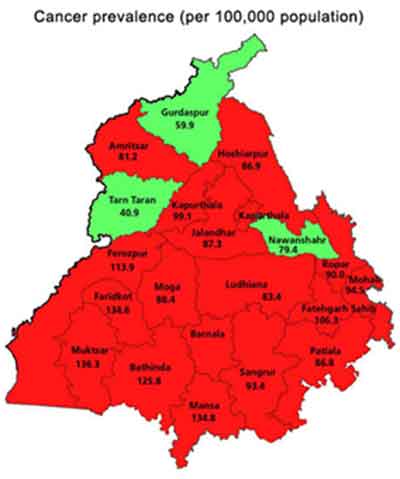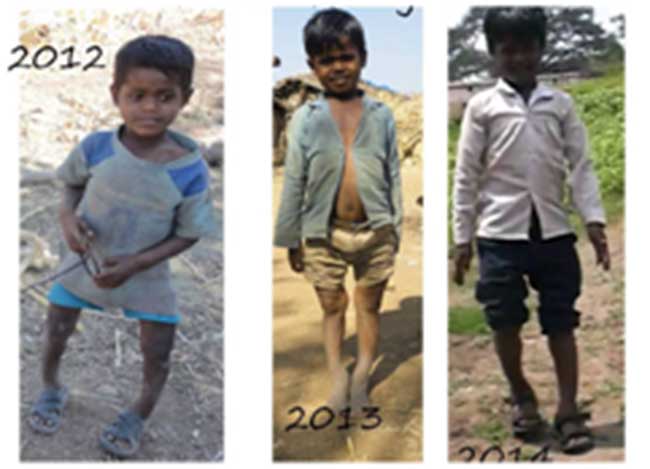Bihar Legislative Assembly elections are to be completed by Nov.7. Caste alliances and communal politics dominate the debate, but there is nothing on such a basic issue like ensuring safe drinking water to everyone.
NDA allies PM Modi and Lohiaite Socialist CM Nitish Kumar made speeches about Vikas in Bihar flowing from their rule for 15 years, and seeking another term. 33 out of 38 districts in Bihar are quality affected, with high Fluoride (Fl) and Arsenic (As), in drinking water, said Bihar’s Chief Engineer (PHED). But that is no issue for them or to any party.
Jal Jeevan Mission for safe drinking water was to be implemented in mission-mode in order to provide piped potable water to every household in India with Functional Household Tap Connection (FHTC) by 2024.
“… And so I declare from the Red Fort today that in the days to come, we will take forward the Jal Jeevan Mission. The central and the state governments will jointly work on this Jal Jeevan Mission. We have promised to spend more than Rs. 3.50 lakh crores on this mission in the coming years……in the next five years, we have to do more than four times the work that has been done in the last 70 years…”
(Extract from the Independence Day address of Prime Minister Modi from the Red Fort on 15 Aug 2019.)
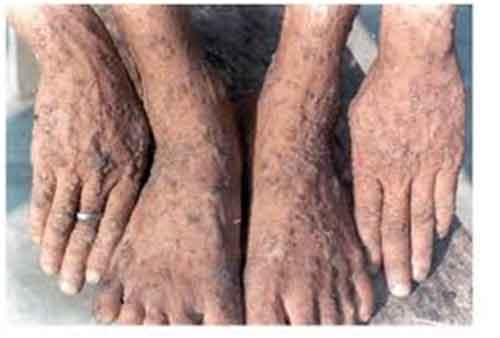
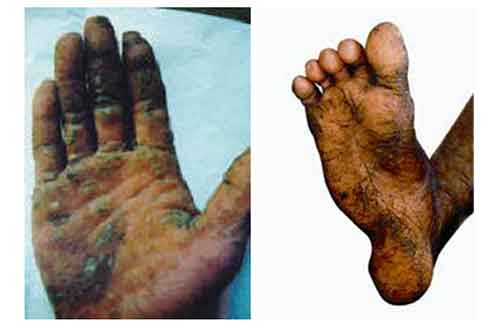
Pictures of Keratosis, affecting the skin of feet and hands, in patients of Arsenicosis, caused by high levels of Arsenic in drinking water. It is only a visible manifestation of a deadly disease. A total of 61 blocks in 18 districts of Bihar are affected by high level of Arsenic; Trivalent Arsenic is found in 87 % of tested ground water sources.
With the toiling people thus affected, what kind of Make in India is possible? Union Water Resources Ministry recently identified, 335 fluorosis-affected districts in India, in 20 states, out of which 33 districts are in Bihar. Another official source mentions “about 28,000 arsenic and fluoride affected habitations” in India. Arsenic (above 0.01 mg/l) was found in 153 districts in 21 states & UTs.
They are only indicative, with different data sets by different Ministries.
Less is heard and discussed about the Jal Mission now. Modi’s India has been busy in war cries. Rs. 4-5 lakh crore every year is spent, directly and indirectly, on defence of every inch of territory. Defending everyone from disease and death is not a priority, not that important.
Nitish Kumar of JDU, heading the Bihar-NDA is now gripped by BJP’s politics. They almost forgot the Jal Jeevan Mission; nothing about it is mentioned in their manifestos and speeches. Ayodhya, Article 370, Kashmir, Pakistan, China are now part of speeches. Of course lakhs of jobs are promised. Whether they will at least compensate the lakhs of jobs lost in recent past, more so after Covid is not stated.
The Jal Jeevan Mission Director explained that out of the total 17.87 Crore rural households, presently only 3.28 Crore (18.33%) households in the country have tap water connection. The remaining 14.60 Crore (81.67%) households are to be provided with FHTCs by 2024. Taps being planned and budgeted by governments and given to contractors goes into statistics. How many taps are actually carrying water can be seen only at the ground level, and statistics are meant to cover up that reality. Lies, damn lies and statistics…that is the order, said Mark Twain. It is more true in India.
BJP promised Covid vaccine, free of cost, to all in Bihar, and like in Tamil Nadu even Computer Tablets to students of 9th and 10th class, but no safe drinking water. RJD leading the grand alliance, including Congress and Left parties, promised many things, but safe drinking water does not figure in it either.
“Fluorosis: A Problem of Serious Dimensions, But Neglected By All Political Parties,” we commented in 2018. The same applies to Bihar, Arsenicosis being an addition.
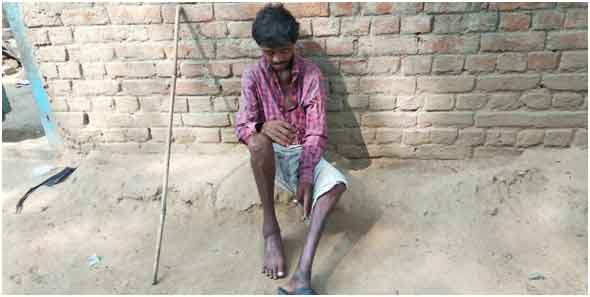
Fluorosis victim, Krishna Manjhi,35, of Churaman Nagar just eight km from Gaya, used to play football till a few years ago. Neck bent, unable to lift up his head, cannot straighten his back, and the bones of his feet are thin and crooked. He can’t walk without a stick; so could not get married. “Nearly every household in the village has at least one member who suffers from a similar condition…None of the political parties has ever raised fluoride contamination as a serious electoral issue.” Courtesy: Umesh Kumar Ray.
How serious is the problem was explained in the article by FMRRC ( Fluorosis Mitigation Research and Resource Centre), based in Hubli, Karnataka. It is a small group with Dr. KS Sharma as its Founder- Chairman, and Dr. M. Bapuji, Senior Scientist Ex-CSIR as its Scientific Advisor. We had explained in an article of May 10, 2018:
“It is sad to note that this menace of polluted waters, including fluoride-ridden ground waters, plagues many regions in India right adjacent to rivers like Ganga, Brahmaputra, Godavari, Krishna, Malaprabha, Tungabhadra, Bhima. River waters are safer, mostly free from fluoride and the like pollutants. Big irrigation projects, with huge public investments, have been there basically to benefit the landed gentry. But they are not used to solve the drinking water needs of the rural poor, most of them landless and land-poor, who anyhow get no benefit of such projects. Their plight is only to face problems of displacement for the sake of these projects, often with no proper, adequate and timely relief and rehabilitation despite many awards and verdicts by the top judicial and official bodies in their favor…”
“Surface waters, ie., rivers, lakes, rain-waters, are mostly free from fluorosis and conserving them is the real and lasting solution,” we noted.
Dr. Ashok Ghosh explained that the ‘Indian subcontinent traditionally used surface water until 1970s, after which due to rising pollution levels, tube wells became the trend and over millions of tube wells exist now. However, although the use of ground water reduced infant and child mortality rates,( he admitted,) it brought Fluoride and Arsenic contamination issues.’
Dr. Ashok Ghosh is Chairman, State Pollution Control Board, Bihar and Professor & HoD Research, Mahavir Cancer Sansthan & Research Centre (MCSRC), Patna.
His explanation needs to be better contextualizied. India’s political economy , post-green revolution, changed the whole scenario. Use of ground water for irrigation by deployment of millions of borewells and energized pumpsets, both subsidized and promoted by the state, was part of green revolution. Borewell water thus became an easy to fetch, major source of drinking water, everywhere. But ground water tapping was all done in a reckless manner , creating the problem of chemical contaminants in drinking water. Earlier it was only biological contamination of water that led to enteritis and lakhs of deaths of young children every year by that. Now that problem remains but is compounded by chemical contaminants. In fact both are more aggravated today than ever.
Almost 80- 90% population in India are estimated to use ground water even for cooking and drinking. And that is increasingly contaminated and polluted, as acknowledged by top geologists. These days, even in towns and cities, many houses are provided with bore well water, canned in 20-litre bottles, most of them sold admittedly by suppliers who are not properly regulated. It is also very true that there is no control or regulation on the supply, sale and quality of bore well water. Even environmentalists are not much focusing on this crisis in the realm of drinking water.
It is an ever- increasing problem affecting the poor more. Governments have not so far taken commensurate steps to protect the large population.
Swach Bharat Mission (SBM) is impossible without Swach Jal. But this focus on safe drinking water is lost in the propaganda blitz on SBM with thousands of crores of rupees spent on that.
Sabka Vikas is not possible without safe drinking water to all. Make in India is impossible when crores of people, more so the toiling classes, are down with diseases and are crippled. But all these slogans are peddled.
Bihar of course is not alone in facing this menace of unsafe drinking water to millions of people. Other (manyBJP-ruled) states top the list in fluorosis : Rajasthan, all of its 32 Dts, is badly affected by Fluorosis. MP 39 dts, 12 of Haryana…Such is the vikas. Congress-ruled, ‘developed state’ of Punjab has it in all of its 20dts.
Number of affected habitations in Gujarat is shown, in the Annexure to the Loksabha reply (December 21, 2017), as NIL, not as NA (not available); it was so shown more than once. The fact is almost all districts (24 out of 25) of Gujarat were threatened by fluorosis. We do not know if it is a deliberate omission, yet another instance of post-truth?
Swatcha Bharat – is it possible without Swatcha (pure and safe) water? In a country that has a defence Budget of around Rs. 4 lakh crore (2018-19), this issue is totally neglected.
Over 10 crore people in the country are getting water contaminated with excess fluoride. But it is not on the agenda of political parties. 33 districts in Bihar are quality affected for Fluoride (Fl) and Arsenic (As), said Bihar’s Chief Engineer (PHED).
There is vast difference in estimates by agencies. For instance CGWB report lists 20 states as affected by Arsenic problem, while IMIS of DDWS (Department of Drinking Water and Sanitation) lists only 5 states. 23 states are listed by CGWB as having Fluoride problem, while IMIS of DDWS lists only 17 states.
According to the Bihar State Public Health Engineering Department, the amount of fluoride in the ground water is dangerously high for 4,157 habitats of 98 blocks in 11 districts of Bihar. In each of these habitations, thousands of residents do not have access to the most basic amenities like clean drinking water.
Fluoride levels in Churaman Nagar (see photo byUmesh Kumar Ray,published in thewire.in 25/Oct/2020)
) were 3.44 mg/litre in 2016. It is a hamlet of 150 households, 80 to 90 families hail from the Manjhi (Musahar) community while the rest belong to the Pasi and Sav castes. Dalits or Mahadalits only are compelled to live in such damned places. Compounded by poverty and malnutrition, their health is ruined.
Apart from dental fluorosis, severe chronic and cumulative overexposure can cause the incurable crippling of skeletal fluorosis, and of a host of problems affecting almost every system in the body, as Dr. AK Susheela (former prof of AIIMS, Delhi), world renowned expert on fluorosis explains.
Bihar is faced with another bigger menace : A total of 18 districts (61 blocks) are affected by high level of Arsenic in drinking water.
An earlier, official document, Guidelines – 2013, of Ministry of Drinking Water & Sanitation (Movement towards ensuring people’s Drinking Water Security in Rural India) in Annexure III says :
“New evidence suggests that the whole Ganga-Meghna-Brahmaputra belt is under threat of arsenic contamination. In India current estimates place 30-40 lakh people at risk from arsenic poisoning and 5 crore people exposed to excess fluoride, iron, nitrate and salinity.”
Health impacts of Arsenicosis were explained by Dr. Ashok Ghosh. He stressed on how Arsenic acts as a slow poison, is cancer-causing, to human body.
“Drinking Arsenic contaminated water causes mental retardness, lung cancer, indigestion, hyperkeratosis, irritations, pterygium, peripheral neuropathy, liver cancer, kidney & urinary bladder cancer and even reduces sperm count leading to infertility.”
(Proceedings of the One-Day National Conference on Provision of Potable Drinking Water in Quality-Affected Areas. Department of Drinking Water and Sanitation(DDWS), Ministry of Jal Shakti (M/o JS), Government of India organized a one-day national conference, 7 February, 2020, New Delhi. He made a presentation there, points from which are given below. )
Research findings by his Institute in Bihar are as under:
12,218 of 41,061 (29.75%) hand pumps had Arsenic contaminated water of higher than 10 ppb, which is the WHO permissible limit. Highest Arsenic value recorded in Bihar is 1,906. A total of 18 districts (61 blocks) are affected by high level of Arsenic; Trivalent Arsenic is found in 87 % of tested ground water sources. Worst-affected districts are Bhojpur, Bhagalpur, Buxar, Patna, Vaishali, Khagaria and Samastipur.
How reliable is the data?“Lack of comprehensive data base for Arsenic contaminated aquifers and exposed population” is a challenge he listed. Many areas with persons showing symptoms of Arsenic poisoning and confirmed cancer are detected as Arsenic hotspots of Bihar, he said.
How is the problem tackled by the Healthcare system of Bihar Govt.?
“Lack of knowledge and medical infrastructure relating to diagnosis and treatment of Arsenicosis” is the other challenge he acknowledged. “No medicine to treat patients with Arsenicosis, ” he candidly admitted.
What are the prospects ? “Research into Arsenic speciation, mobilization are largely fragmented and repetitive… Very limited epidemiological studies/ research conducted till date…Lack of maintenance and monitoring of mitigation structures..”
In addition to the disability that fluoride causes, it has also led to their social ostracisation. Due to government neglect, life has become tough for them.
Data for water contamination like all other things is fudged. No two sets of data match. Of course, going by such data, fluorosis problem is being effectively controlled. That however is not true for most of the states except Telangana, where the State govt led by TRS tackled the challenge by a massive effort backed by a huge budget. That was because of a prolonged mass movement that created a sense of urgency to drinking water issues, which turned it into a political issue, and forced all parties to pay attention to it. Elsewhere it is a false claim.
There are two issues to be noted in this regard. The data is neither complete nor based on scientific parameters. Why do we say it is not complete ? In fact, the data is based only on those habitations tested, we had noted. (in our article of May 10, 2018.)
As per Format E28 of the Union Ministry’s data, Total Nos. of habitations is : 17,26,031 . Habs where at least one source is tested : 7,25,096. Where no source was tested : 10,00,935. (Obviously, sources not tested far exceed those tested. )
More importantly, the figures are a gross under-estimate for the simple reason that the government’s data is based on an out-dated criterion of 1.5 ppm of fluoride as “upper limit” while the latest international recommendation for India and such hot climates is just 0.5ppm.(ppm means parts per million. In popular terms, it is expressed as milli-grams per litre.)
FMRRC, years ago, explained in a pamphlet : ‘It is to be noted that fluorosis is caused by drinking water with fluoride above permitted levels. While BIS_IS : 10500-2004 prescribed 1mg as desirable limit, which is also the limit as per Indian Council for Medical Research(ICMR), which is an authentic and official body, the Government took Fluoride in drinking water at 1.5 mg/Lit as maximum permissible.’ Not that the standards are finally fixed and implemented. Union Minister for Food and PDS had said on 14-2-2015 : “ BIS (Buro of Indian Standards) is developing standards ….for public supply of potable drinking water… (they) will be made mandatory in a phased manner.” (Economic Times, 15-2-2015).
In fact in an International conference on Fluorosis held at NIN, Hyderabad, in November 2016, experts from International Society for Fluoride Research (ISFR) proposed that safety levels of fluoride in drinking water in India should be fixed at 0.5 mg (parts per million) from the existing 1 ppm. FMRRC was a participant which insisted on based on field observation in several pockets in Karnataka. This consensus was reached by experts attending the 33rd International Conference of ISFR. One can see the real gravity of the situation if this recommendation is taken.
And all the official data, including that given in parliament in 2017, is based on these flawed criteria of BIS 10500 : 2012, taking 1.5 mg as the basis. And not 1mg “acceptable limit”.
If 1mg Acceptable limit is taken as the criterion, instead of 1.5mg taken by the government, the numbers will surely multiply . Obviously it is all an under-statement of the grave problem. If experts consensus in ISFR (0.5mg) is taken, one can only imagine how the numbers will shoot up. Such statistics may be good for the governments, but that can not hide disease and death caused by water.
There is a variation only in wording : Requirement (Acceptable limit) ( earlier it was : Requirement, i.e., desirable ) and “ Permissible Limit in the Absence of Alternate Source” (no change in wording here.) However, 1mg and 1.5 mg are the respective parameters retained.
There is not much awareness, even in the medical fraternity, not to speak of common people. For instance, medical literature even today often tells us that skeletal fluorosis is not treatable, not reversible. It is not true, reports across the world show it can be stopped, slowed, even reversed in several cases including skeletal fluorosis, more so in children, with no more than safe water and a little of good nutrition. Even within India, such reports are there. We noted about Arsenic problem too.
An earlier BIS 105000 Standard For Drinking Water in its descriptive part says : “Fluoride in water above 1.5 mg/l is dangerous and causes a disease called ‘Fluorosis’ which affects the teeth and the bones of humans who consume water with high levels of fluoride.” What is cited years ago, above 1.5mg as dangerous, rightly so, is shown as Permissible Limit in the Absence of Alternate Source even after revision.
What were “immediate and temporary” measures suggested? Expedite NWQSM schemes: All schemes under National Water Quality Sub-Mission are to be completed by 31 December, 2020 as per NGT direction, which remains on paper like so many of its orders. Community Water Purification Plants (like several RO Filter Systems we see in some villages) were the remedy suggested. It is acknowledgedly riddled with problems. They work for an year or so and go out of order; they are plagued with poor power supply and lack of trained and paid man power.
In the concluding session, of Delhi Conference cited above, it was acknowledged :
“ Functionality of CWPPs: Based on reports of defunct CWPPs due to poor Operation and Maintenance issues post-installation, the Additional Secretary (JJM), DDWS advised state/UT public health engineers to take matter seriously and survey all CWPPs immediately and carry necessary remedial measures to ensure their functionality on sustainable basis.”
That was what was observed by FMRRC. Even where they functioned, socio-economic factors deprived the most vulnerable sections of the population. Mainly it is they (SCs STs) who are worst victims as seen in the photos.
see also Socio-Political and Economic Aspects Of Fluorosis, in CC April 17, 2017.
https://countercurrents.org/2017/04/socio-political-and-economic-aspects-of-fluorosis/
(FMRRC is Fluorosis Mitigation Research and Resource Centre, based in Hubli, Karnataka. For more on it mail to : [email protected], and [email protected])
SIGN UP FOR COUNTERCURRENTS DAILY NEWSLETTER

